Giant Red-Winged Grasshopper

The Giant Red-Winged Grasshopper (Tropidacris cristata) is one of the most visually striking and largest grasshoppers in the world. Native to the lush forests of Central and South America, this colossal insect captivates with its vivid red wings, massive size, and bird-like flight. And the nymph deserves fame on its own – due to a mesmerizing tiger-like pigmentation.
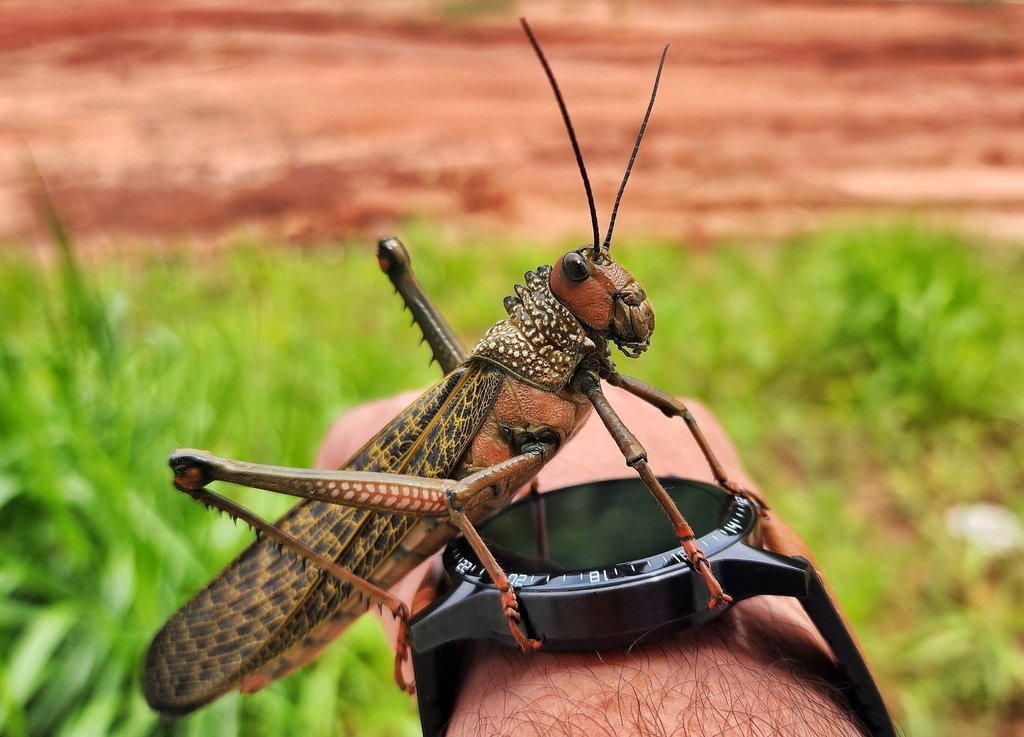
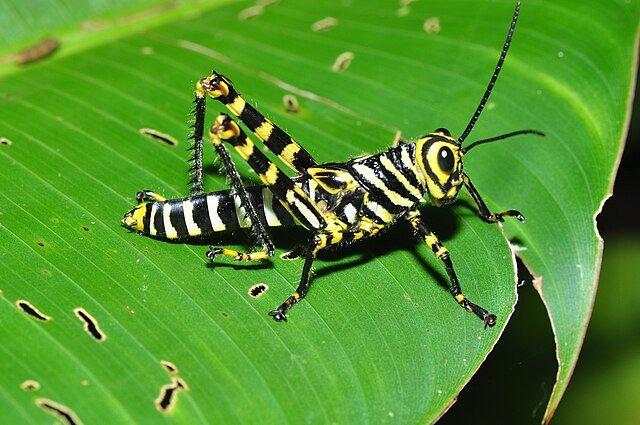
Every Costa Ballena visitor would have encountered and marveled at the sheer size and presence of these critters – you haven’t seen a grasshopper until you’ve seen a Costa Rican grasshopper!

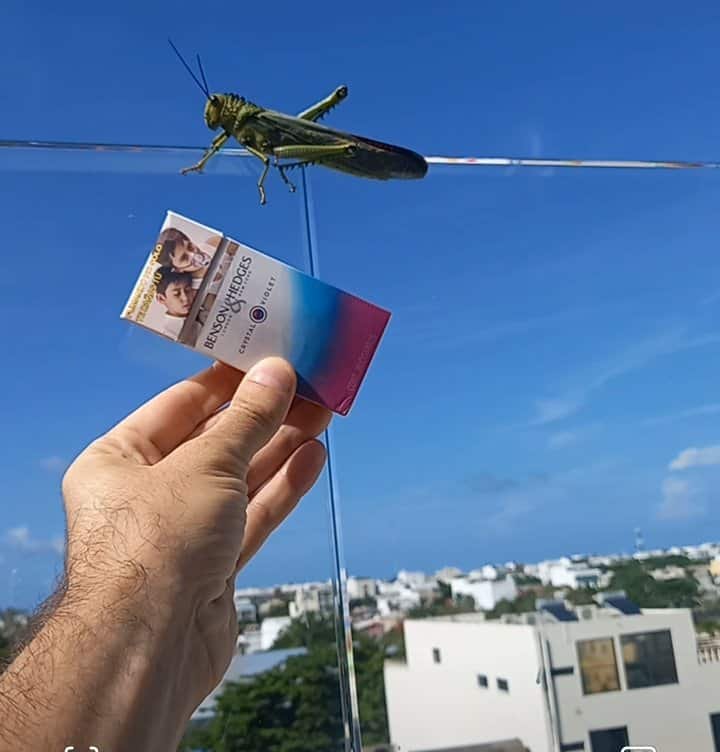
📏 Size and Appearance
This species earns its “Giant” title for good reason:
- Length: Adults can reach up to 14.5 cm (5.7 inches) in body length.
- Wingspan: Their wings can span up to 24 cm (9.4 inches). This rivals the common kingfisher or house sparrow.
- Coloration: While adults are typically green or brown with brilliant red hindwings, nymphs are black with yellow stripes, a warning sign of potential toxicity.


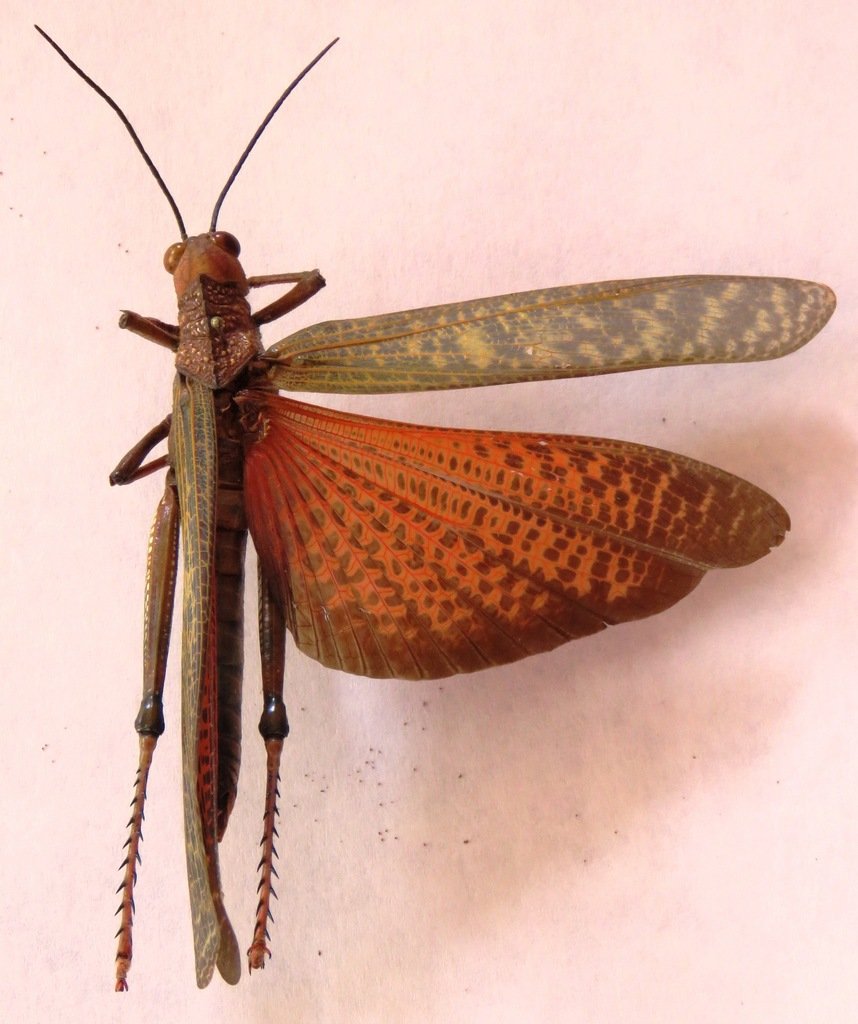
👑 The Famous Red Wings
The Giant Red-Winged Grasshopper’s vivid crimson hindwings are its most striking feature—flashing like warning flags when disturbed. These wings serve a dual purpose: they startle predators with sudden bursts of color and help the insect glide through dense tropical foliage. Unlike the camouflaged forewings that blend into leaves and bark, the red wings are a bold declaration of presence, possibly mimicking toxic species to deter threats. In flight, they create a dramatic spectacle, transforming the grasshopper from a hidden forest dweller into a blazing aerial sentinel.
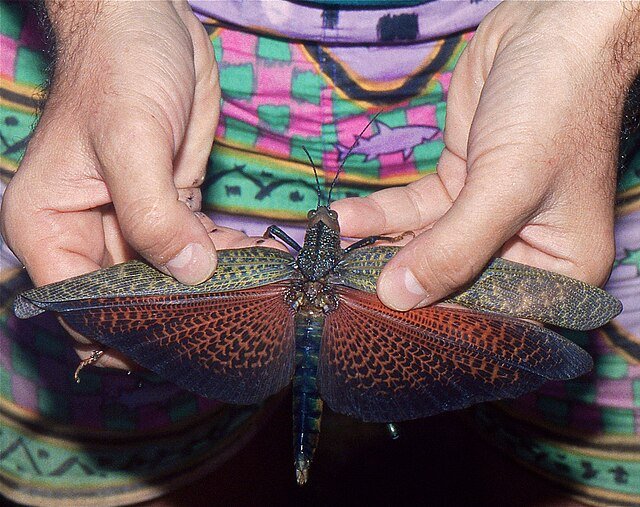
🐅 The Famous Nymphs
The nymphs of the grasshopper are as visually dramatic as the adults—but in a completely different way. Unlike their green or brown-winged elders, these juveniles are wingless, black-bodied, and boldly striped with bright yellow or orange bands. This striking coloration serves as a warning signal, a classic example of aposematism, suggesting they may be distasteful or toxic to predators. Nymphs often move in gregarious groups, amplifying their visual impact and enhancing their collective defense. Their appearance is not just eye-catching—it’s a survival strategy, honed by evolution to deter threats before they even get close.

🐛 Life Cycle and Behavior
The life of a Tropidacris cristata unfolds in three main stages:
- Egg: Females lay up to 100 eggs in the soil, forming a protective sac.
- Nymph: Wingless and gregarious, nymphs molt several times as they grow.
- Adult: Fully winged and mobile, adults focus on reproduction and dispersal.
These grasshoppers are herbivorous, feeding on a wide variety of plants including leaves, shoots, and fruits. In large numbers, they can become agricultural pests, capable of damaging crops.

🤏🏼 Do Giant Red-Winged Grasshoppers Bite?
- Yes, they can bite—but only defensively. Their mandibles are strong enough to deliver a noticeable pinch, which may cause minor discomfort or irritation, similar to a mild insect nip.
- No venom or toxins are involved. The bite does not inject harmful substances and poses no serious health risk.
- Bites are extremely rare. These grasshoppers are herbivores and generally avoid human contact. They do not seek out people to bite.
While the literature claims bites are mild, I have known a gardener or two who violently disagree and speak of painful, skin-piercing chomps. I say, better safe than sorry!


🍃Habitat
The Giant Red-Winged Grasshopper thrives in humid tropical forests of Central and South America, favoring dense vegetation and warm climates. It prefers elevated canopies and leafy undergrowth where it feeds on a wide range of plant species. The insect can be found from lowland oceanside forests up to elevations of approximately 2,400 meters (7,900 feet). This geographical & elevation flexibility allows the species to occupy a broad ecological niche across Central and South America.

🎓 Educational Superstar of the Insect World
The grasshopper is a favorite among educators, entomologists, and nature centers for its dramatic size and vibrant coloration. With a wingspan that rivals small birds and hindwings that flash brilliant red or orange, it captivates students and visitors instantly. Its bold appearance makes it ideal for teaching key biological concepts such as camouflage, aposematism (warning coloration), and insect anatomy. In classroom settings, it helps illustrate metamorphosis, ecological roles, and predator-prey dynamics. Because nymphs travel in groups and display toxic warning colors, they’re perfect for discussions on group behavior and evolutionary adaptation. And I have a vivid memory of dissecting a specimen in a high school biology class being in awe at the sheer size of the tropical specimen in a country where a typical grasshopper is rarely over an inch in length.

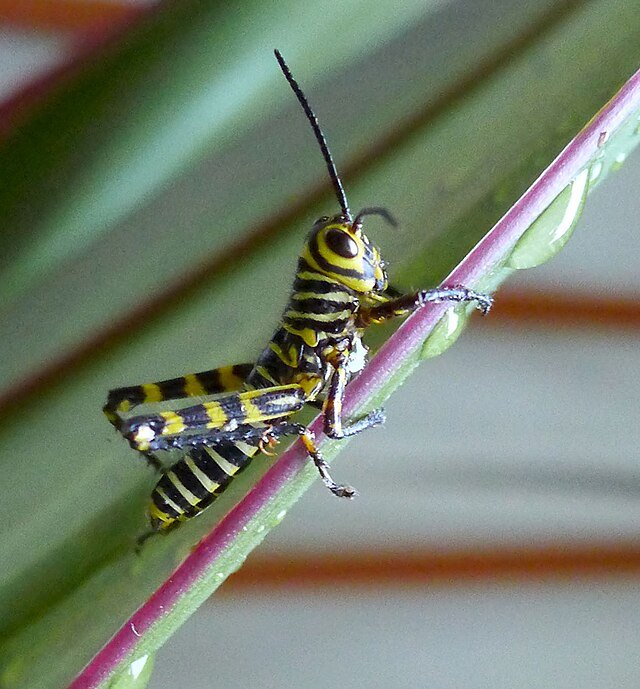
Do you dream of living in the midst of breathtaking tropical scenery and amongst amazing animals like our stunning Giant Red-Winged Grasshopper? At RE/MAX WE SELL PARADISE, we list hundreds of tropical properties – homes, land, farms, estates & businesses – all within a stone’s throw of the amazing rainforests, mountains, beaches and resident exotic animals that make Costa Ballena a world-famous destination. Start your journey to Paradise by browsing our property listings here.
Cover image c/o Jake Rehage, inaturalist.



